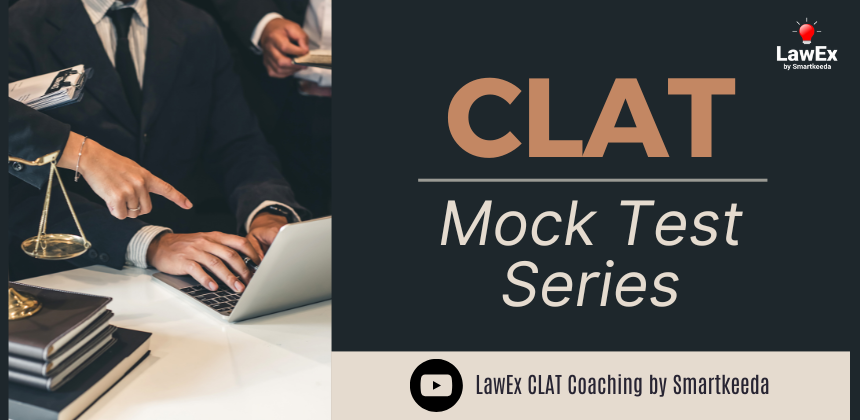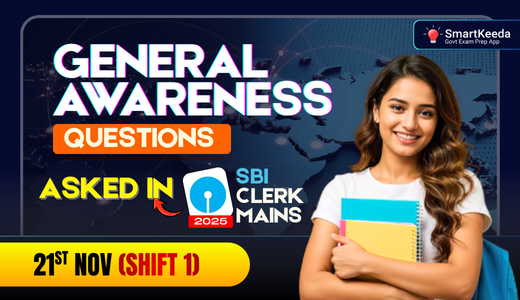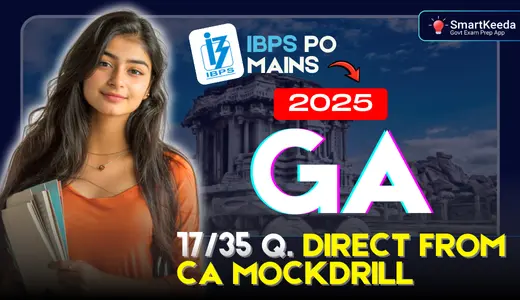CLAT Mock Test 2019 | CLAT Mock Test Series Free 2019 at Testzone

A guide to understand how to choose the best test series for CLAT 2019
The CLAT 2019 exam is just around the corner and it is of utmost importance that the test series you refer to are not only up to date in terms of testing you on the latest pattern being asked but also prepare you for any sudden changes on the D-day. Keeping this in mind, Smartkeeda has brought out the CLAT 2019 mock test series- “Karen CLAT 2019 Fateh”.
In the ensuing paragraphs, our focus would be on content development of our test series. The importance of the right content cannot be overstated. Content forms the backbone of a good series and all the other parts depend on the strong foundation that is provided by strong and relevant content. It is important for the aspirants to understand what makes for good content and learn to differentiate it from the various so called test series which are there only for money minting purposes.
Having said that, here are some ways to judge for yourself whether a test series is actually worth your while or merely a money minting gimmick.
Compare it with the previous years’ papers:
The best way to judge a test series is to see how relevant it is from the actual exam’s perspective. This can occur only after the aspirant has analyzed the previous years’ papers and see whether the mock mimics the actual paper in terms of the type and nature of questions asked. Check below a few examples from various sections of the paper to get an idea how the Smartkeeda’s test series fares in this area-
CLAT 2018 English Language Section:
Question I:
Direction: In the following sentence a part of the sentence is underlined. Beneath each sentence four different ways of paraphrasing the underlined part are indicate. Choose the best alternative among the four options
Rehman likes to have a finger is every pie.
A. likes cooking
B. wants to do every thing
C. object to everything
D. cannot take decisions
Sample mock test question I:
Level: Moderate
Direction: In the following sentence a part of the sentence is underlined. Beneath each sentence four different ways of paraphrasing the underlined part are indicated. Choose the best alternative among the four options.
This meeting can be a great opportunity to break the ice with the new government in Pakistan.
A. Have an honest discussion
B. To try a new way of dealing with each other
C. To relieve tension or start a conversation
D. To announce something important
Explanation:
Break the ice: Do or say something to relieve tension or get conversation going in a strained situation or when strangers meet.
Ex: I never know how to break the ice and start a conversation with somebody!
Clearly, option C conveys this meaning well. The rest are incorrect and do not conform to the meaning of the phrase described above.
Hence, option C is correct.
CLAT 2017 English Language Section:
Question II:
Choose the correct spellings in options given below.
A. Accommedation
B. Accommodation
C. Accomadation
D. Accomedation
Sample mock test question II:
Level: Easy
Direction: Choose the correct spellings in questions given below.
A. Adherence
B. Adherance
C. Adherense
D. Adharence
Explanation:
Adherence: attachment or commitment to a person, cause, or belief.
Eg: A strict adherence to etiquette.
Hence, option A is correct.
CLAT 2018 Reasoning Aptitude Section:
Question III:
Fin the missing group in the sequence:
X7D, V11G, 513J, _____, P19P
A. Q15M
B. R17M
C. Q17L
D. R15M
Sample mock test question III:
Level: Easy
Find the missing group in the sequence:
A1N D4P G9R J16T ?
A. L27W
B. M27V
C. N25X
D. M24V
Explanation:

For numbers, we are adding consecutive prime numbers starting with 3 to each term.
Option B is hence the correct answer.
CLAT 2018 Legal Aptitude Section:
Question type IV:
Legal Principle: Negligence Is the absence of care by one party which results in some damage to another. Damage is an essential ingredient to constitute a tort of negligence.
Fact Situation: Mistry left his ladder on the public road while unloading it from a truck when he went to open the shutters of his shop. Saini who was riding his motorcycle had to swerve hard to avoid hitting the ladder as he came with speed on the road. Saini fell down but was miraculously not injured.
Which of the following statements is the most appropriate In relation to the legal principle stated above?
A. MistryIs not liable for the tort of negligence since Saini was not injured though he fell down.
B. Mistry is liable for the tort of negligence since Saini fell down due to the presence of the ladder.
C. Mistry is not liable for the tort of negligence since Saini was speeding on the road.
D. Mistry is liable for the tort of negligence since he was careless in leaving the ladder on the road.
Sample mock test question IV:
Level: Difficult
Principle: “When at the desire of the promisor, the promisee or any other person has done or abstained from doing, or does or abstains from doing or promises to do or abstain from doing something, such an act or abstinence or promise is called consideration for the promise”.
Facts:Shanaya makes an offer to Vanessa to buy a car for 3 lakhs rupees which she bought for 20 lakhs rupees. Vanessa accepts the offer and after due deliberations for 2 days, the contract is made and executed. Later, Shanya asks for revoking the contract and Vanessa denies the same.
Decide as a judge whether this contract in which a car is sold way less than its Cost Price is valid in the eyes of the Indian Laws.
A. Valid
B. Void
C. Incomplete contract
D. Agreement is illegal as price is too low
Explanation:
The contract is legal and valid. The consideration for the contract can be low and still a perfectly valid contract can be made under Indian Contract Act. Certain exceptions to this rule are when a contract is made by a person who can be unduly influenced. An agreement to which the consent of the promisor is freely given is not void merely because the consideration is inadequate; but the inadequacy of the consideration may be taken into account by the Court in determining the question whether the consent of the promisor was freely given. See, Undue influence in Indian Contract Act.
Hence, option A is correct.
Sample mock test question V:
Level: Difficult
Principle: A person is said to be of sound mind for the purpose of making a contract if, at the time when he makes it, he is capable of understanding it and of forming a rational judgment as to its effect upon his interests.
Facts: Rohan, who is usually of sound state of mind, but occasionally of unsound state of mind, enters into a contract with Mohit when he was in sound state of mind. Mohit comes to know about this fact of Rohan’s mental condition afterwards and files a suit against Rohan. Decide as a judge?
A. Rohan cannot enter into contract because he is of unsound state of mind when he entered into contract.
B. Rohan can enter into contract but the burden is on the other party to prove that he was of unsound state of mind at the time of contract.
C. Rohan can enter into contract but the burden is on Rohan to prove that he was of sound state of mind at the time of contract.
D. None of these
Explanation:
Rohan can enter into a contract because at the time of making the contract he was of sound mind. According to Section 12 of Indian contract act - A person is said to be of sound mind for the purpose of making a contract, if, at the time when he makes it, he is capable of understanding it and of forming a rational judgment as to its effect upon his interests.
For Burden of proof, according to Indian evidence act, the burden of proof as to any particular fact lies on that person who wishes the Court to believe in its existence, unless it is provided by any law that the proof of that fact shall lie on any particular person. The burden of proof lies on mohit.
Section 103 of Indian Evidence Act states that:-
The burden of proof as to any particular fact lies on that person who wishes the Court to believe in its existence, unless it is provided by any law that the proof of that fact shall lie on any particular person.
Hence, option B is correct.
CLAT 2018 Reasoning Aptitude Section:
Question Type VI:
Directions: The question below consists of two statements, one labeled as Assertion’ (A) and another as Reason’ (R). Examine these two statements carefully and select the answers to these Items from the codes given below.
Assertion (A): It Is the legal and constitutional duty of the State to provide legal aid to the poor.
Reason (R): No one should be denied justice by reason of his poverty.
Codes:
A. Both A and R and individually true and R is the correct explanation to A
B. Both A and R are individually true but R is not the correct explanation to A
C. A Is true but R is false
D. A ¡s false but R is true
Sample mock test question VI:
Level: Moderate
Assertion (A): Austin’s concept of law is known as imperative theory.
Reason (R): Austin emphasized on the commanding character of law.
A. Both A and R are individually true and R is the correct explanation of A.
B. Both A and R are individually true but R is not the correct explanation of A.
C. A is true but R is false
D. A is false but R is true
Explanation:
The theory of legal realism, like positivism, looks on law as the expression of the will of the state but sees it as made through the medium of Courts. Law no doubt is the command of the sovereign, but the sovereign to the realist is not the Parliament but the Court. Austin says that law is a command which obliges a person or persons to a course of conduct. It is laid down by a political sovereign and enforceable by a sanction.
Hence, option A is correct.
Sample mock test question VII:
Level: Difficult
Assertion: The essence of joint liability under section 149 of the IPC is that the criminal act must have been done with a view to fulfil the common object of an unlawful assembly.
Reason (R): Any premeditated act done by a member of an unlawful assembly would render the other members of that assembly liable.
A. Both A and R are individually true and R is the correct explanation of A.
B. Both A and R are individually true but R is not the correct explanation of A.
C. A is true but R is false.
D. A is false but R is true.
Explanation:
The member has done an act and it is not mentioned whether it is in furtherance of common object or not. Thus it does not meet the criteria of Section 149 IPC. For example, if the goal of the unlawful assembly was only to obstruct the way of the President but one member say N had a grudge against the President. He kills him on the spot through his gun which he bought yesterday. The other members were unaware of the gun. He had premeditated on the act but other had not as the common object was to obstruct and not kill. Only N is liable for murder.
Hence, option C is correct.
Check the level of difficulty of questions:
Many a times, the number of tests in a test series would be large but if you check the level of difficulty of questions, they would either be mostly easy or exceptionally tough. The aim of any test series should be to correspond to the actual level of exam as well as to be a little more difficult. This is important so as to prepare the aspirant for any unpleasant surprises. If the paper is on the easier side, the aspirant who had prepared for a difficult exam would not be on the losing side but the opposite may not be true.
Sample mock test question VIII:
Level: Moderate
Directions: In the question below, a related phrase is followed by a group of words. Select the group of words that best expresses a relationship similar to the one expressed in the original phrase.
Bite off more than one can chew
A. Keep up in bad circumstances
B. Do something too difficult for you
C. Survive to fight tomorrow
D. Make promises you cannot keep
Explanation:
Bite off more than you can chew: If you say that someone has bitten off more than they can chew, you mean that they are trying to do something which is too difficult for them.
Ex: He bought the old hotel but soon realized he had bitten off more than he could chew.
Option B conveys the meaning well and is correct. Option D also comes close to the meaning but then it talks more about breaking promises. Just because you have bitten off more than you can chew does not ensure that you would not be able to do it. It simply means things are difficult for you.
Hence, option B is correct.
Quantitative Aptitude: Sample Question VIII:
Level: Moderate
A shopkeeper deals in milk and 45 litre mixture is to be distributed in Milk & Water in the ratio of 4 : 1. If 4 litre milk & 3 litre water will be added in the mixture then what will be the new ratio of water and milk?
A. 5 : 6
B. 3 : 10
C. 4 : 5
D. 7 : 8
Explanation:
In the mixture of 45 litre,
|
Milk = |
45 |
× 4 = 36 litre, Water = |
45 |
× 1 = 9 litre |
|
5 |
5 |
New ratio,
= 9 + 3 : 36 + 4
= 12 : 40 = 3 : 10
Hence, option B is correct.
Reasoning Aptitude: Sample Question IX:
Level: Moderate
Directions: Each question has a statement followed by two assumptions. You have to decide which of the assumptions is/are “implicit” and mark the correct answer accordingly.
Statement: People are facing water crisis due to long power cut.
Assumptions:
I. Availability of water is dependent on electricity.
II. Long power cuts create chaos in the routine life.
A. Only I is implicit.
B. Only II is implicit.
C. Both I and II are implicit.
D. Either I or II is implicit.
Explanation:
In the statement it is mentioned that water crisis is due to long power cuts, this clearly means that availability of water depends upon the availabilty of electricity. If electricity is interrupted, water crisis will arise.
Thus statement I is implicit.
Chaos or mismanagement occurs in absence of electricity because it is already mentioned that water crisis occurs due to long power cuts, which creates chaos in routine life.
Thus assumption II is implicit.
Hence option (C) is correct.
Look at the depth of explanations:
It is not necessary to only have quality level questions. The questions in themselves would be of no use for the aspirants if the explanations are not adequate. Smartkeeda prides itself for providing detailed explanations for all questions. The focus is on clearing the concepts here. Take a look at some sample explanations:
Sample mock test question X:
Level: Moderate
Directions: Fill in the blank by choosing the most appropriate option.
We identify these stocks and wait for an ________ time when we get the right price to invest.
A. Opportune
B. Approximate
C. Perfectly
D. Inordinate
Explanation:
The statement tries to convey that the writer waits for the right time to invest in the stock.
The only word that fits in meaningfully is opportune which means fitting.
Inordinate means excessive while the rest are irrelevant.
Hence, option A is correct.
Sample mock test question XI:
Level: Difficult
What is ‘Zero hour’ in parliament?
A. When the proposals of opposition are considered.
B. When matters of utmost importance are raised.
C. Interval between the morning and the afternoon session.
D. When a money bill is introduced in the LokSabha.
Explanation:
Zero Hour: The time immediately following the Question Hour has come to be known as "Zero Hour". It starts at around 12 noon (hence the name) and members can, with prior notice to the Speaker, raise issues of importance during this time.
Hence, option B is correct.
Sample mock test question XII:
Level: Difficult
Which of the following is empowered to entertain any disputes relating to elections of the Prime Minister and the Speaker to the Parliament on an elections petitions?
A. Supreme Court of India
B. High Courts
C. Central Administrative Tribunal
D. President of India in Consultation with the Election Commission
Explanation:
In order to avoid dual jurisdiction over the election matters the Election Commission recommended that trial of election petitions should be entrusted to the High Courts instead of election tribunals. Parliament thus enacted Section 80-A of the Representation of the People Act, 1951 providing that the "High Court" shall be the authority for presentment of election petitions under Article 329(b) of the Constitution. This was incorporated by an amendment in the year 1966 (Act 47 of 1966).
Hence, option B is correct.
Look at the type of questions and their weight age:
A mock test should have a healthy mix of all types of questions. Focusing on a few topics excessively is a sure shot recipe for disaster as it impacts the potential for practice. Ideally, it is always better to introduce most of the different types of questions expected in the exam. This helps in clearing the aspirants thought process and they can decide which questions they would want to attempt and which to avoid.
Legal Aptitude:
A special mention about this section is imperative. This is by far the make or break section of the CLAT exam. The legal aptitude section assumes even more importance as the section is high scoring and can be used to crack the CLAT exam.
The CLAT legal aptitude section can be divided into two major parts- Legal knowledge and Legal Reasoning. In both these sections, SmartKeeda offers you the best content- in sync with the previous year papers while striving to keep the difficulty level similar to more than the actual exam paper.
Legal Knowledge: The questions in the legal knowledge sub part of legal aptitude test your knowledge of legal facts as well as current affairs events in the news in recent past. Some important areas include the Law of torts, Indian Contract Act, the Indian Penal Code, the Constitution of India and other miscellaneous topics.
Legal Reasoning: This section primarily contains questions modeled on the lines of principle-facts. This section requires application of concepts, necessitating regular practice and question solving. The best way to deal with this section is to solve as many mocks as possible and to regularly make a note of the important principles.
The Smartkeeda mocks boast of a healthy mix of both types of questions. Take a look at the 2018 CLAT paper vs some of the questions in our mock tests.
Sample mock test question XIII:
Level: Difficult
Legal Principle: A contract obtained by misrepresentation is voidable at the option of the other party.
Facts:Arjun and Naman live in a posh locality of suburban Mumbai. They are good friends and know everything about each other. One day Arjun makes a proposal to Naman to sell a car making him believe that the car he is selling gives a very good average of 20km/hour. The car turns out to be of 2/3rd of the average which Arjun was claiming.
Can the contract be held voidable?
A. Yes
B. No
C. Void abintio.
D. Court will decide the matter
Explanation:
The contract is voidable at the behest of Naman because the misrepresentation was made by Arjun without intention to do fraud. The court will decide in favour of Naman.
Hence, option A is correct.
Legal Knowledge based questions:
Sample mock test question XIV:
Who is an Ombudsman?
A. A judicial officer designated to receive complaints against the violation of rights of citizens.
B. An official who is charged with representing the interests of the public by investigating and addressing complaints of maladministration or a violation of rights.
C. An elected representative of the people to investigate and address the complaints of maladministration or a violation of rights.
D. A specially designated police officer assigned with the power to investigate and address the complaints of maladministration or a violation of rights.
Sample mock test question XV:
Level: Easy
Lex Loci is used in the legal world of Lawyers. It means:
A. Law of a place
B. Italian laws
C. Domestic laws
D. Latin regulations
Explanation:
Latin term meaning “the law of the place.” It means the law of the state or the nation where the matter in litigation transpired. Lex loci brings the notion that the rights of parties to a legal proceeding are governed by the law of the place where those rights arose.
Hence, option A is correct.
Hopefully you would now be able to take a much informed decision on choosing which test series is the best for you. Meanwhile, take a look at the Smartkeeda’s test serieshere. Happy Studying!








